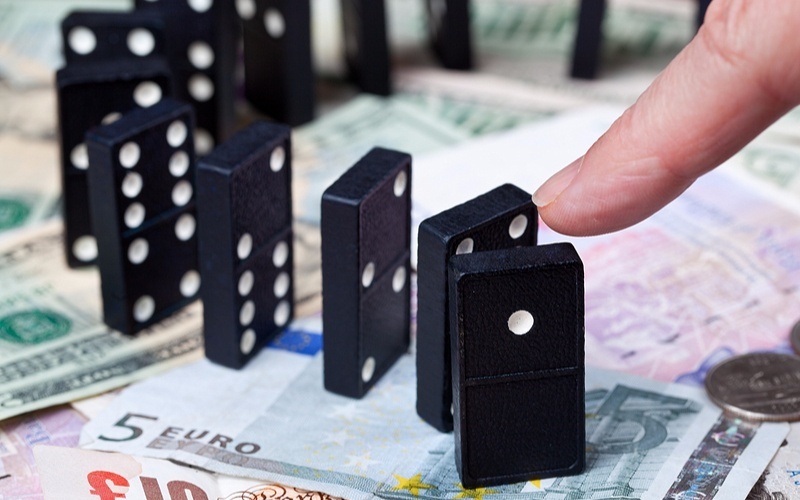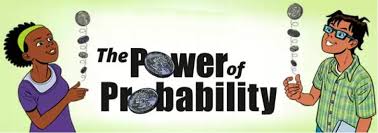
The more I talk with traders, read articles and listen to commentators the more everyone seems to be talking about what is the “most probable”. Certainly we all like the thought of being on the right side of a trade and assessing probabilities can play a large part.
Unfortunately, when it comes to options, all too many traders are led astray on the role probabilities play in option trading and end up limiting their chances of success. This article has two objectives:
- Discuss Probabilities and Option Trading
- Offer suggestions on making winning option trades
Probabilities and Outcomes
Most people believe that when placing a bet with multiple choices it is wisest to take the one with the highest probability. We see this frequently when option traders espouse selling Deep-Out-of-The-Money (DOTM) calls or puts and other strategies as “High-Probability” trades. This is facilitated as most every Broker-Dealer includes “probability” as part of their option trading platforms. One requires no special math skills to determine which of many options trades offer the highest probability. Option probabilities can be just a mouse-click away.
But the real question is “Does knowing the option probability help us?”
When placing bets, or investing, it is NOT the probability of outcome that dictates choice … it is the probability of outcome weighed against the “pay-off” that matters. One cannot make a successful and informed choice until one is given the “pay-off”. It is NOT probability that matters . it is EXPECTED RETURN that matters.
If you take nothing else from this article, take this… When placing a bet, one does not choose the most “probable” outcome; one must choose the most “favorable” outcome.
Let’s look at the simple coin toss to better understand this. We all know that a fair coin toss has a 50% probability of landing either heads or tails. But what if the odds for winning bets on heads were one-for-one (1:1) while the odds for winning bets on tails was only 0.75:1? Though the probability remains the same, the expected return does not
One must not just look at the probability of “winning” but compare it to the reward to determine if it is favorable
So, what do coin tosses have to do with option trading? Very simple … option pricing is 100% about probabilities.
The real difference between options and a coin toss is that expected return
In order to calculate the expected return one cannot just multiply the probability by the premium credit. One must also calculate the expected loss
The Greeks
Consider that the Market makers determine the pricing using very sophisticated statistics and “Greeks”. Most traders are aware of some of the first order Greeks such as Delta, Theta and Gamma … but there are second and third order Greeks most traders never heard of… such as “Charm” and “Speed”. So don’t fool yourself, without advanced training in math, statistics, probabilities and the proper algorithm you cannot properly assess all the factors taken into account in the pricing.
I’ll save everyone a great deal of effort in making these complex calculations and simply state that every option is probabilistically equivalent. Over time, o ne has NO better probability of a GROSS profit on a DOTM option than a DITM option.
Surely, a call that is written 2% DOTM has a much better chance of not being over-run than a call 1% OTM. However, it also has a much lower premium credit. Over time, the extra “over-run” risk of the 1% OTM is compensated for by the extra premium credit gained when it is not over-run. They are probabilistically equivalent.
If I may “hammer this home” by using a Roulette wheel as an example. Bettors can make the equivalent of a DOTM bet by betting on odd, even, red or black. Or they could make the equivalent of an ATM bet by betting on a single number, such as 28. Over time the monetary results will be the same. They will “hit” more often on the red/black/odd/even but will win less when they do. I won’t go into it here, but the “house edge” is the same 5.26% on every bet one can make (actually, there is one bet that increases the “house edge” to 8%, but few make that bet).
Let me also clear up a common misconception about probability and the Roulette wheel. Probability theory DOES NOT predict that everyone will be a loser if they play often enough. Quite the opposite. Even in a game that is purely chance and requires no skill, there will be lifetime winners and lifetime losers. It’s only when these two sets of betters are aggregated will we see the expected result. Probability theory only predicts that, over time, the winners and losers will even out and winners will win 5.26% less than “fair” and losers will lose 5.26% more than “fair”.

If you are not a member yet, you can for answers to all your options questions
The House Edge
With this basic understanding of options probability and expected return, let’s look to see if the “high-probability” option trade is, in fact, the “most favorable” trade. To make this analysis we must add in the costs of the trade. We need to move out of theory and into reality … a reality where the Market Maker insists on a “house edge”.
Before I get started, let me say that there are, on occasion, mispriced options. If there is a mispricing it can be exploited. However, this is very rare and most traders aren’t equipped to notice it. So let’s leave that on the shelf and move forward.
Let me use options on SPDR S&P500 ETF (SPY) as my example. I choose this underlying as they are widely traded, liquid and have a very low bid-ask spread. Let’s look at selling a call option. We can compare an At-The-Money (ATM) trade with a DOTM trade. We must remember that the pay-offs are adjusted according to their probability. From a risk/reward perspective on a GROSS return they are equivalent.
Let’s look at the bid/ask of the ATM and the OTM option. Though the bid/ask will vary dependent upon duration (weekly, monthly, etc.) …. for these purposes let’s look a month ahead. Most typically, the option will be priced as follows: